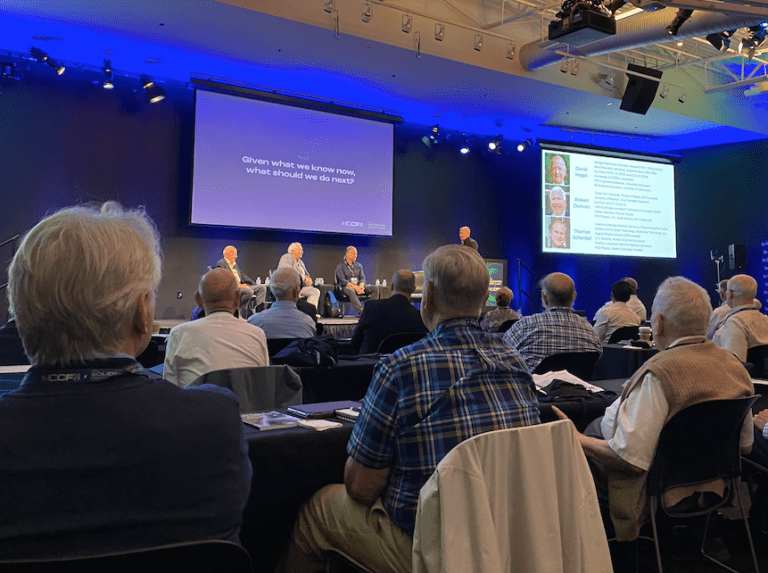Greg Jaczko – Lame Duck Press Conference At Nuclear Energy Assembly
I had the opportunity to attend the Nuclear Energy Assembly held in Charlotte, NC during the period from May 21-23. Dr. Gregory Jaczko submitted his resignation as the Chairman of the NRC on May 21, but he did not change his plans to address the annual nuclear industry gathering on May 23. Following that talk, Dr. Jaczko gave a press conference.
I apologize for the shaky quality; I have not yet found a reasonably portable tripod for my iPhone.
One of the reasons I finally got around to posting this video is that it provides some information about the issue of construction changes at Vogtle units 3 & 4 and Summer units 2 & 3.
Ever since I heard a talk about the 10 CFR 52 “one step” licensing process during an ANS Utility Working Group meeting, I have been worried. The presenter of that talk was a high level NRC manager. When I asked about the process for making, reviewing and approving changes during construction, he told me that there was no process yet developed because the regulators were assuming that there would not be any changes made.
Anyone who has ever built anything – especially for the first time – knows that changes from the initial design are inevitable. No matter how good 3-D modeling gets, there are things that do not get accurately modeled. In addition, changes in common practice, materials, and other technology are inevitable, especially when designs take a decade or more to complete and construction takes a minimum of four years from the time of first concrete pour.
Change processes must be planned so that required changes can be efficiently reviewed, approved and implemented. The change process must discourage or prevent frivolous changes.
In my opinion, based on my field experience in several different types of projects and manufacturing enterprises, anyone who assumes that they can do a complete design that does not need any changes during construction for the first few units is setting themselves up for failure. The old process of licensing construction and then inspecting along the way is better for the first of a kind.
Even better yet would be licensing the first few of a kind as demonstration units whose safety is ensured through siting and operational restrictions. Those units would receive licenses that could be upgraded after satisfactory completion of detailed physical testing. There is a process for that in the regulations, but no customer has ever wanted to use it for large plants that cost many billions.
Unfortunately, the people who set the path for the Vogtle 3 & 4 and Summer 2 & 3 units believed the nuclear industry assumptions that the 10 CFR 52 “one step” licensing process entailed less risk than the old 10 CFR 50 process that included a construction permit based on a reasonably complete design and an operating license granted after construction and low power testing. The motivation all along was to avoid the Shoreham Syndrome of completing the plant at great expense and then not being granted permission to operate.
Aside: This is a good time to remind Atomic Insights readers about an excellent documentary about Shoreham. And, no, I am not biased just because I have a role in the film. 🙂 End Aside.
Articles like this one – New reactor design forecasts future successes, challenges – are leading me to believe that my reservations about the part 52 process were justified.


Recent Comments from our Readers
Rob I share some of your professional background. I also share your concern for those suffering in energy poverty. I…
US is a huge energy producer in a world that still has plenty of energy poverty. Over 700 Million people…
A good writeup Michael. A couple of poimts though. Actually water without precise chemistry control is very corrosive. All reactors…
Here’s a comment on a business case for HALEU. This is from a reading assignment from Raluca Scarlat, Assistant Professor…
Since posting my previous comment on this thread, I’ve learned about another property of MOX fuel that poses a problem…